Lower back pain is a common ailment affecting millions of people worldwide. It can be caused by various factors, including poor posture, muscle strain, or underlying health conditions. Incorporating specific exercises into your routine can significantly alleviate pain and enhance overall back health. This article will detail ten effective exercises for lower back pain relief, highlighting their benefits and how to perform them correctly.
Table Of Content
Lower Back Pain Exercises
Exercise 1: Pelvic Tilt
Pelvic Tilt is a gentle exercise designed to engage and strengthen the core muscles, providing stability and support to the lower back. This exercise is particularly beneficial for those experiencing mild to moderate back pain.
How to perform the Pelvic Tilt:
- Lie on your back with your knees bent and feet flat on the floor.
- Tighten your abdominal muscles and flatten your lower back against the floor.
- Hold for 5 seconds, then relax.
- Repeat 10 to 15 times.
Benefits: This exercise helps in reducing pain by strengthening the muscles that support the lower back, enhancing stability, and promoting better posture.
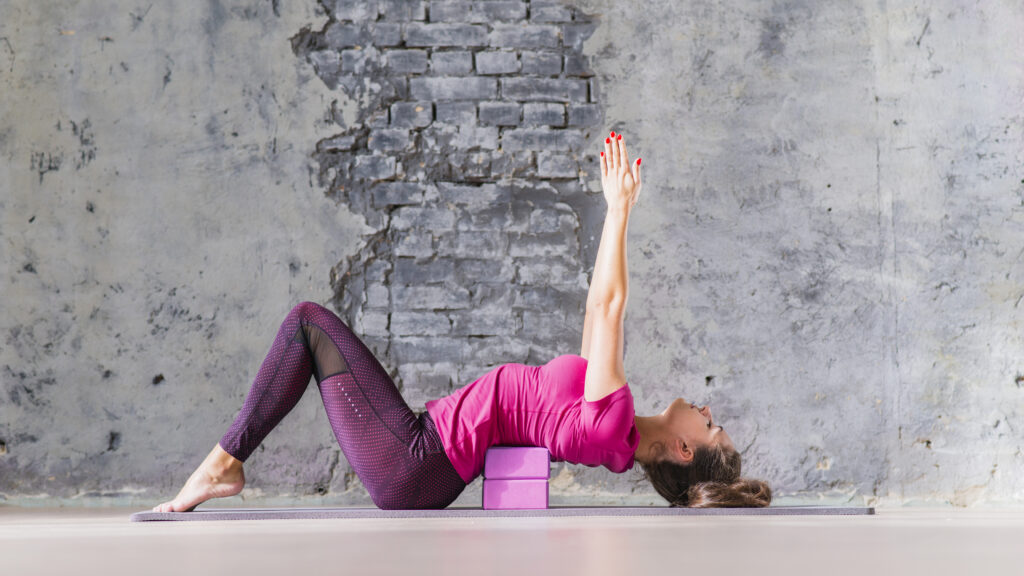
Exercise 2: Cat-Cow Stretch
The Cat-Cow Stretch is a dynamic movement that mobilizes the spine and increases flexibility, making it an excellent choice for alleviating back pain.
How to perform the Cat-Cow Stretch:
- Start on your hands and knees in a tabletop position.
- Inhale, arch your back and lift your head and tailbone toward the ceiling (Cow position).
- Exhale, round your spine, and tuck your chin to your chest (Cat position).
- Repeat 10 to 15 times, flowing smoothly between the two positions.
Benefits: This stretch improves spinal flexibility, reduces tension in the lower back, and promotes a gentle massage to the spine and surrounding muscles.
Tips to maximize stretch:
In a neutral postion-
- Flatten your back and drop your elbows (make sure elbows are not locked in)
- Put your hands shoulder-width apart and your knees right below your hips
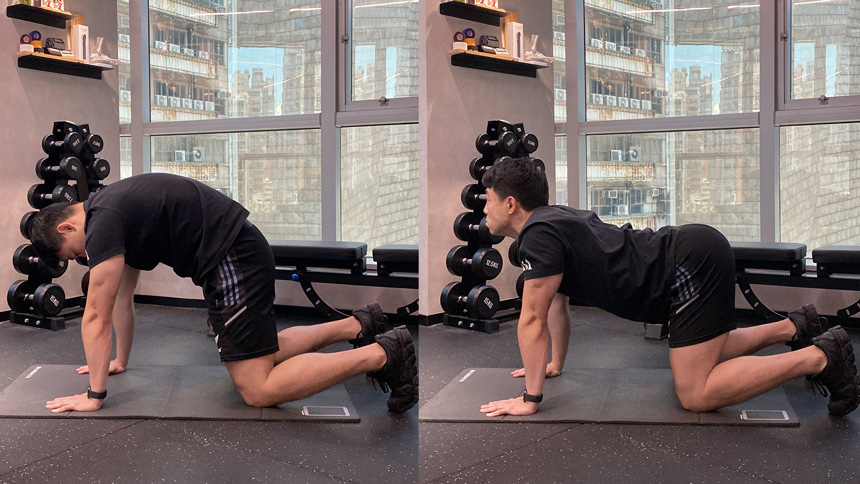
Exercise 3: Child's Pose
Child’s Pose is a restorative yoga pose that stretches the lower back and provides a relaxing and gentle release of tension.
How to perform Child’s Pose:
- Kneel on the floor with your big toes touching and knees spread apart where you feel the most comfortable in.
- Sit back on your heels and extend your arms forward, lowering your torso between your thighs.
- Rest your forehead on the floor and hold for 20 to 30 seconds.
- Repeat as needed.
Benefits: This pose helps in relieving tension in the lower back, promoting relaxation, and gently stretching the spine.
Tips to maximize stretch:
- As you extend your arms forward, keep your glutes resting on your heels.
- Inhale and slowly exhale to deepen the stretch.
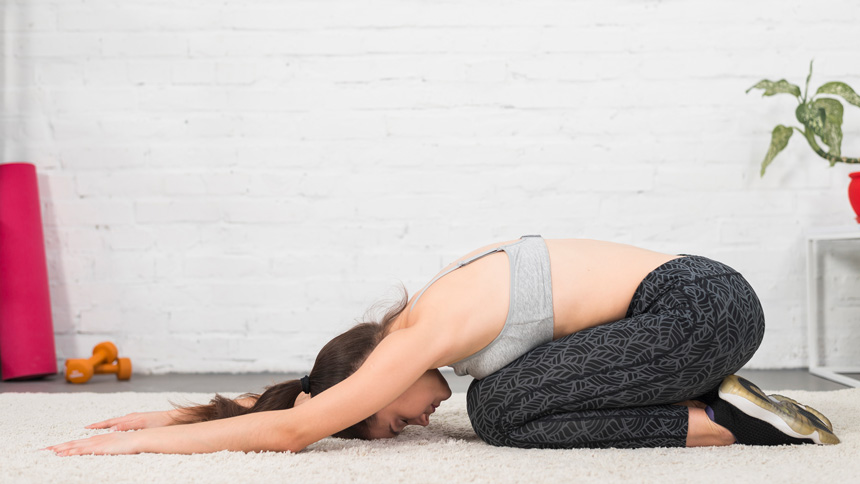
Exercise 4: Knee-to-Chest Stretch
The Knee-to-Chest Stretch is a simple yet effective stretch to relieve tension and increase flexibility in the lower back.
How to perform the Knee-to-Chest Stretch:
- Lie on your back with your knees bent and feet flat on the floor.
- Bring one knee to your chest, keeping the other foot flat on the floor.
- Hold for 15 to 30 seconds, then switch legs.
- Repeat 2 to 3 times per leg.
Benefits: This stretch helps reduce lower back pain by stretching the muscles and ligaments of the lower back, promoting better flexibility and mobility.

Exercise 5: Bird-Dog Exercise
The Bird-Dog Exercise is a core strengthening exercise that enhances stability and support for the lower back.
How to perform the Bird-Dog Exercise:
- Start on your hands and knees in a tabletop position.
- Extend your right arm forward and left leg backward, keeping your body in a straight line.
- Hold for a few seconds, then return to the starting position.
- Repeat on the opposite side.
- Perform 10 to 15 repetitions on each side.
Benefits: This exercise improves balance and stability, and strengthens the core muscles, which are essential for supporting the lower back.
Tips to maximize stretch:
In neutral postion-
- Flatten your back and drop your elbows (make sure elbows are not locked in)
- Put your hands shoulder-width apart and your knees right below your hips
During stretch-
- Flex your abdominal muscles
- Head in neutral position, facing the ground
- Make sure your arms and legs are straight
(Imagine someone is stretching your arms and pulling your legs)
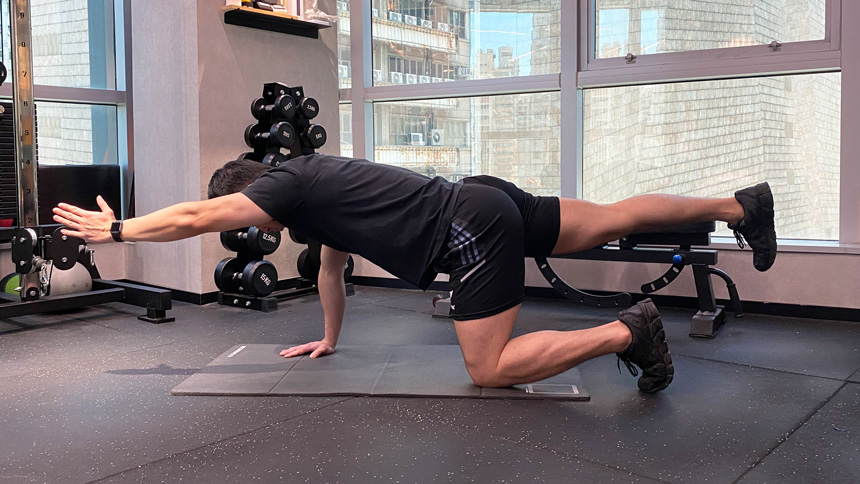
Exercise 6: Bridge Exercise
The Bridge Exercise is a strengthening exercise that targets the glutes and lower back muscles, helping to alleviate pain and improve strength.
How to perform the Bridge Exercise:
- Lie on your back with your knees bent and feet flat on the floor.
- Lift your hips towards the ceiling, squeezing your glutes.
- Hold for 5 seconds, then lower back down.
- Repeat 10 to 15 times.
Benefits: This exercise strengthens the glutes and lower back muscles, providing better support and reducing pain.
Tips to maximize stretch:
In neutral postion-
- Put your hands shoulder-width apart and your knees right below your hips
During stretch-
- Elevate your hips until your torso is align with your shoulders and knee, forming a straight line
- As you raise your hips, put your hands behind your back and press the palms together
- Keep your neck relaxed and neutral
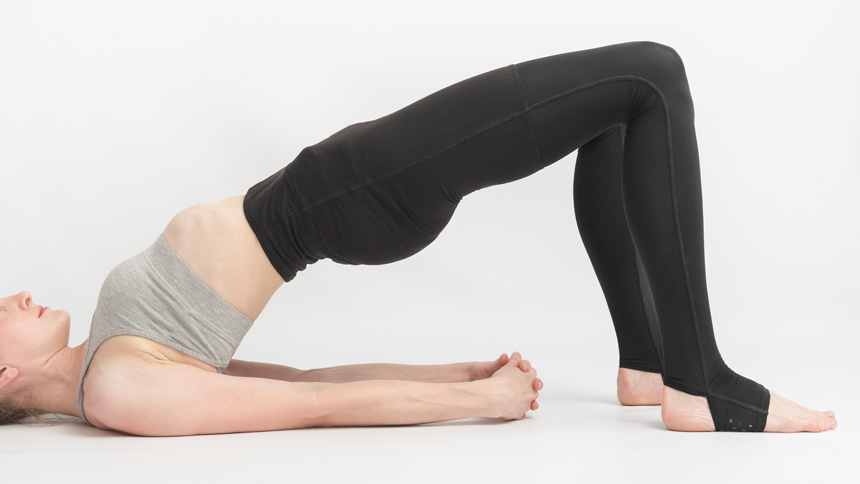
Exercise 7: Hamstring Stretch
The Hamstring Stretch is essential for relieving tightness in the hamstrings, which can contribute to lower back pain.
How to perform the Hamstring Stretch:
- Sit on the floor with one leg extended and the other bent, foot touching the inner thigh.
- Reach towards your toes, keeping your back straight.
- Hold for 15 to 30 seconds, then switch legs.
- Repeat 2 to 3 times per leg.
Benefits: Stretching the hamstrings reduces strain on the lower back, enhancing flexibility and alleviating pain.
Tips to maximize stretch:
- Deep breath inhale and as you exhale slowly, deepen the stretch and hold the position for 15 to 30 seconds
- Keep your spine neutral and not bend
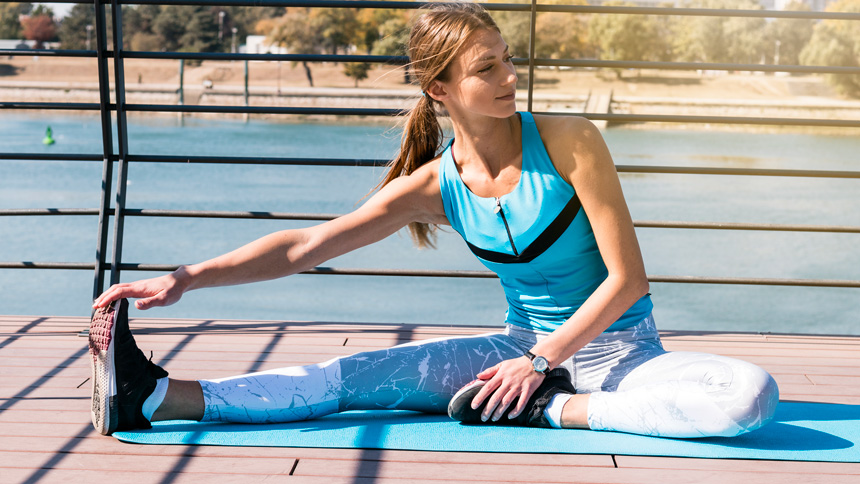
Exercise 8: Piriformis Stretch
The Piriformis Stretch targets the piriformis muscle, which can cause lower back and sciatic pain when tight.
How to perform the Piriformis Stretch:
- Lie on your back with your knees bent and feet flat on the floor.
- Cross one leg over the other, resting the ankle on the opposite knee.
- Pull the bottom leg towards your chest.
- Hold for 15 to 30 seconds, then switch sides.
- Repeat 2 to 3 times per side.
Benefits: This stretch helps in reducing sciatic pain and lower back tension by loosening the piriformis muscle.
Tips to maximize the stretch:
- Push gently on the leg that is rested on the leg you are pulling towards your chest
- Make sure glutes are not lifted above the ground

Exercise 9: Seated Spinal Twist
The Seated Spinal Twist is a gentle twist that enhances spinal mobility and relieves lower back tension.
How to perform the Seated Spinal Twist:
- Sit on the floor with your legs extended.
- Bend one knee and place the foot on the opposite side of the extended leg.
- Twist your torso towards the bent knee, using your opposite arm to deepen the stretch.
- Hold for 15 to 30 seconds, then switch sides.
- Repeat 2 to 3 times per side.
Benefits: This twist improves spinal flexibility, reduces tension, and enhances overall back health.
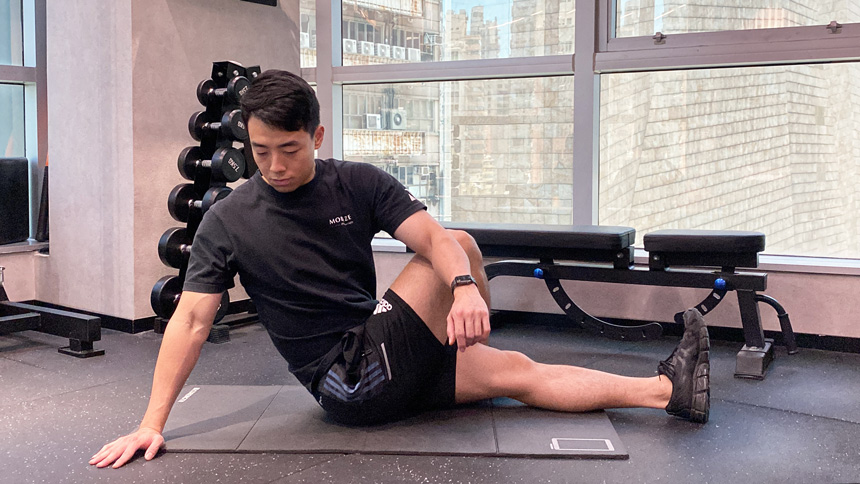
Exercise 10: Superman Exercise
The Superman Exercise is a strengthening exercise for the lower back muscles, helping to alleviate pain and improve strength.
How to perform the Superman Exercise:
- Lie face down on the floor with your arms extended forward.
- Lift your arms, chest, and legs off the floor simultaneously.
- Hold for 5 seconds, then lower back down.
- Repeat 10 to 15 times.
Benefits: This exercise strengthens the lower back muscles, improving support and reducing pain.

Case Study: Jennifer
Jennifer was a 35-year-old office worker who experienced chronic lower back pain due to prolonged sitting and poor posture. After consulting with Mobilize Physiotherapy Centre, she began incorporating these ten exercises into her daily routine. Within a few weeks, Jennifer noticed significant improvements in her pain levels and overall back health. Her experience underscores the importance of regular exercise and professional guidance in managing and alleviating lower back pain.
Conclusion
Incorporating these ten exercises into your routine can provide significant relief from lower back pain. Regular practice not only alleviates pain but also enhances overall back health, flexibility, and strength. If you experience persistent pain, consider seeking advice from a physiotherapist or exploring physical therapy services. Remember, consistency is key to achieving long-term relief and maintaining a healthy back.


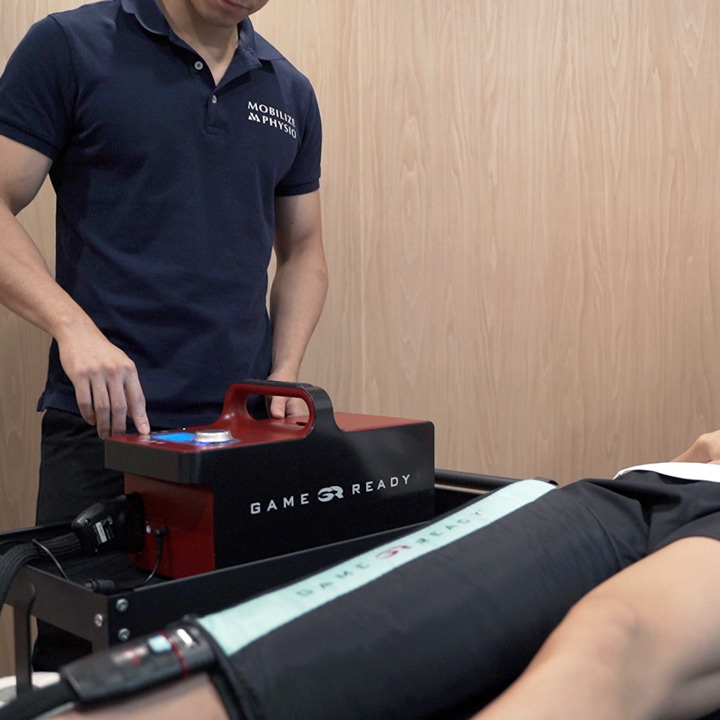
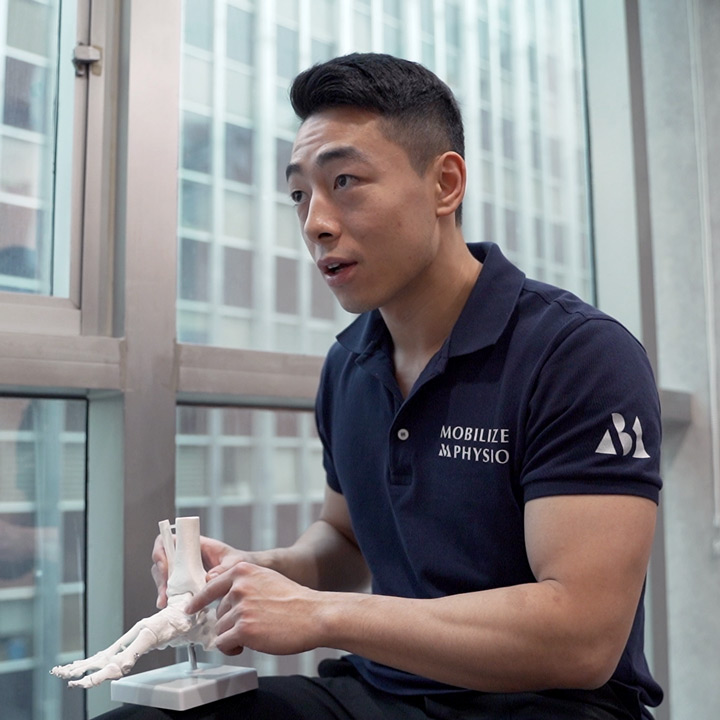
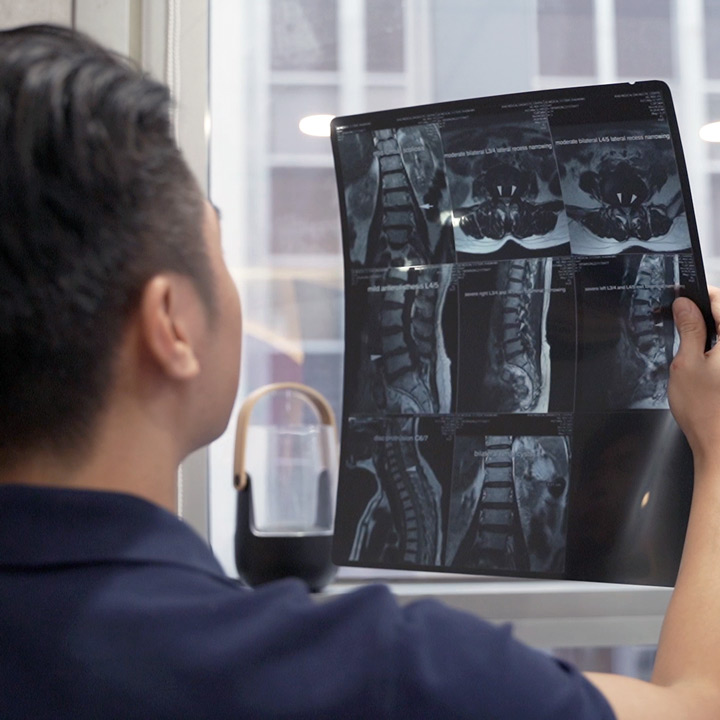
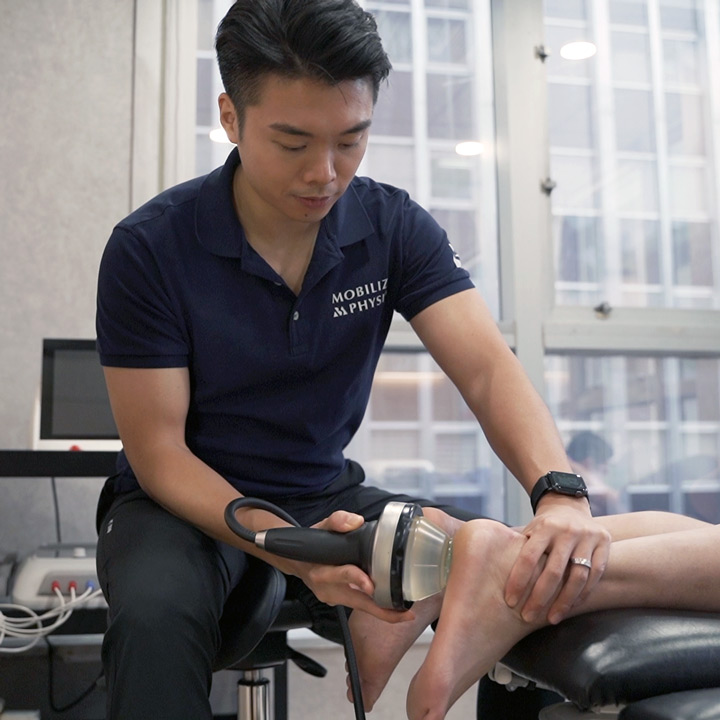
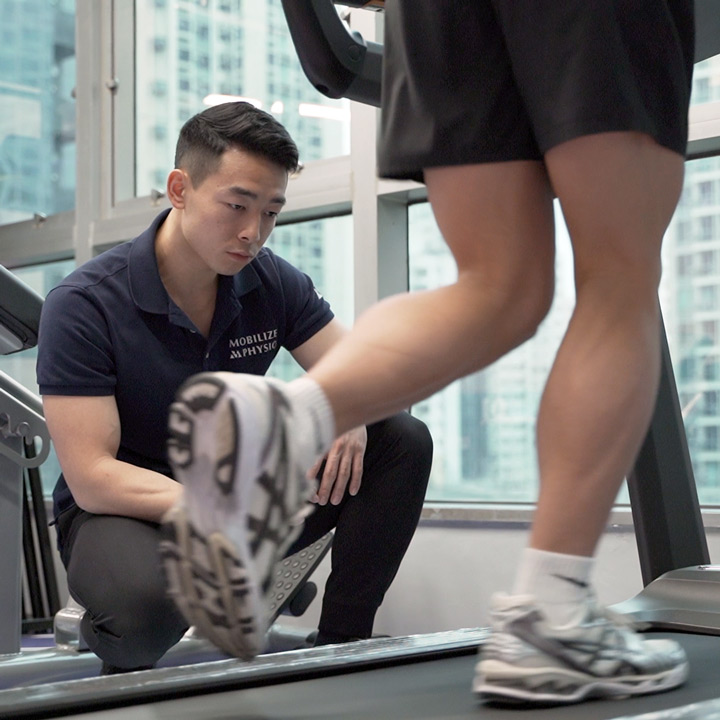
Physiotherapy Service
Mobilize Physio is a physiotherapy center located in Hong Kong. Our team of professional physiotherapists provides high-quality, evidence-based pain treatment. Our services include sports injury treatment, pain management, post-surgery rehabilitation, and posture and body alignment correction.
Every patient is unique, and we believe that every treatment plan should be customized accordingly. Therefore, we focus on one-on-one service to ensure that each patient receives personalized attention and specialized care. Contact us today to learn more about our physiotherapy services.
Latest Blog Posts

Why Pre and Post-Operative Physiotherapy is Essential for Recovery?

Tips to Reduce Hip Joint Pain and Stiffness
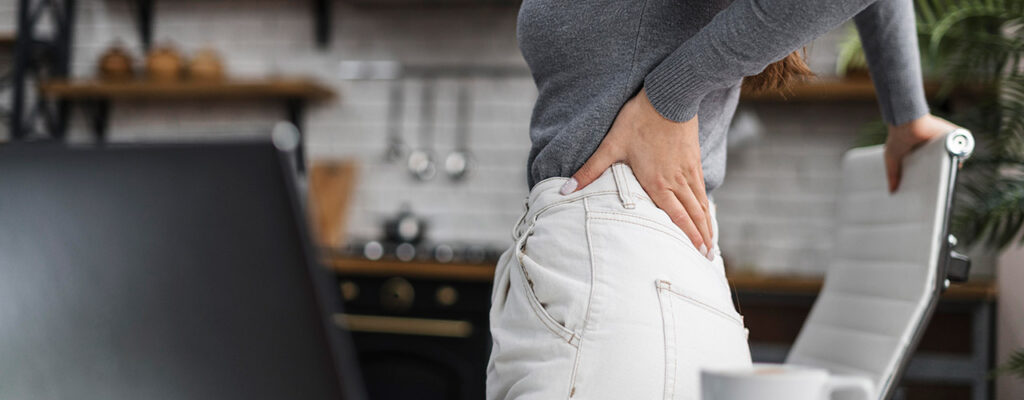
Pain in the Butt: Why It’s Probably Not Piriformis Syndrome
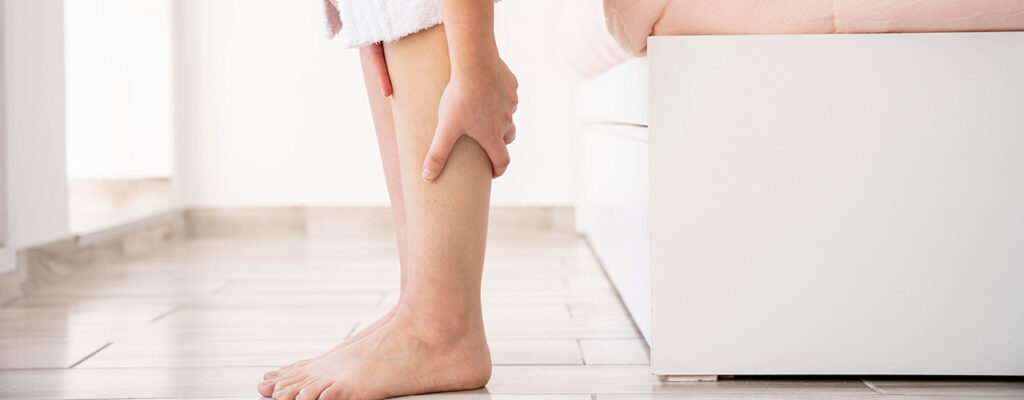
Standing All Day at Work? 7 Tips to Reduce Your Risk of Varicose Veins

Mobility Enhancement for Older Adults: The Key to Healthy Aging

Traditional Acupuncture vs. Dry Needling: What’s the Difference?

